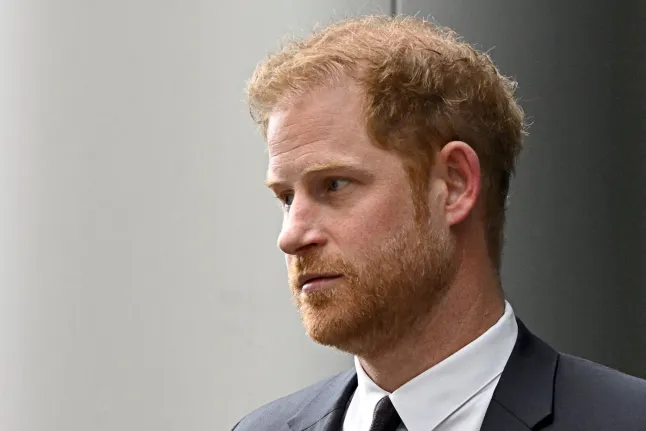No Way Back for Prince Harry: Examining His Journey and Choices

The Transformation of Prince Harry: A Royal History
Prince Harry, born Henry Charles Albert David in September 1984, has always been in the public eye as the younger son of Prince Charles and the late no way back for prince harry Princess Diana. His upbringing was marked by distinct contrasts: while he experienced the privileges of royal life, he also faced the immense pressures and scrutiny that came with it. The early loss of his mother at a young age profoundly impacted him, creating a sense of loss that would shape his identity and choices in the years to come.
Harry’s time in the military was a pivotal period in his life, offering him an escape from royal duties and allowing him to forge a separate identity. Serving with the British Army for ten years, including two tours in Afghanistan, he gained valuable lessons in leadership no way back for prince harry and service, while also facing the harsh realities of conflict. These experiences further defined his worldview and influenced many of his subsequent philanthropic endeavors, particularly in supporting veterans and mental health awareness.
However, as Prince Harry navigated the complex web of royal expectations, he also encountered significant challenges within the royal family. The glaring media scrutiny and the resulting pressure took a toll on his mental health. As a royal, he was expected to maintain a specific image, but his growing desire for authenticity and a departure from royal norms created a rift, leading to choices that many perceive as signifying a “no way back” situation for him within the institution.
Through various pivotal moments, including his marriage to Meghan Markle and their subsequent relocation to the United States, Harry’s journey has become one of self-discovery. He has sought to redefine his role and values, often in contrast to traditional no way back for prince harry royal expectations, solidifying the notion that returning to a conventional royal life may no longer be feasible for him. The transformation of Prince Harry is not merely a narrative of rebellion; it is a journey shaped by personal experiences and a quest for a new identity amidst an enduring legacy.
The Shift: Moving to America and Finding Independence
Prince Harry’s relocation to the United States marked a profound transformation in both his public persona and personal life. This significant transition, no way back for prince harry particularly following his marriage to Meghan Markle, illustrates a deliberate move towards greater independence and a redefined identity. By stepping away from royal duties, he has been afforded the opportunity to craft a narrative that aligns more closely with his values and aspirations, signifying a clear “no way back” for the Duke of Sussex.

Settling in California allowed Harry and Meghan to break free from the constraints of royal expectations. The couple has actively engaged with various philanthropic endeavors, which reflect their commitment to social issues and community empowerment. Their no way back for prince harry establishment of the Archewell foundation epitomizes this new path, as it focuses on mental health, gender equality, and combating misinformation, effectively allowing them to make meaningful contributions outside the bounds of monarchy.
Additionally, their choice to reside in a more informal and diverse community has further highlighted the couple’s desire for a simpler and more authentic life, away from the rigid protocols inherent to royal life. This lifestyle shift has encouraged Harry to publicly no way back for prince harry express his views on mental health, a subject he is deeply passionate about, and has enabled him to relate to audiences on a more personal level, enhancing both his vulnerability and relatability.
However, this departure from royal duties has not come without challenges. The couple has faced considerable media scrutiny and public criticism, underscoring the difficulties inherent in their decision to forge a new path. Yet, through these experiences, Harry has cultivated a renewed sense of purpose, indicating that there is indeed no way back to the life he once knew, but rather a commitment to forging a meaningful future that resonates with his identity and principles.
The Role of Media and Public Perception
Prince Harry’s departure from royal duties in 2020 marked a significant turning point in his life, drawing both intense scrutiny and support from the media and the public. The media’s portrayal of his choices has often fluctuated, oscillating between sympathetic narratives and scathing critiques. This dynamic interaction has had long-lasting implications on his public image, driving home the notion that there is no way back for Prince Harry to his previous status within the royal family.
The initial media response to Prince Harry’s decision to step back was marked by a flurry of tabloid headlines, primarily questioning his motivations and raising doubts about his commitment to royal responsibilities. This intense scrutiny has been no way back for prince harry compounded by the couple’s revelation of their struggles with mental health, which has elicited both empathy and backlash from different sections of society. Some media outlets emphasized his courage in addressing these issues, while others lampooned him for what they perceived as abandoning royal traditions.

Public perception of Prince Harry has also been deeply shaped by how the media has framed his narrative. Supporters view him as a modern figure advocating for mental health awareness and personal freedom, whereas detractors criticize him for diverging from his royal lineage. This polarization reflects a broader societal divide regarding traditional roles versus contemporary aspirations.
Consequently, the intricate relationship between Prince Harry and the media has become a pivotal factor in his new identity. The diverse reactions illustrate how personal decisions can be complicated by external narratives. As he continues to navigate public life, the no way back for prince harry implications of these media portrayals will likely linger, reinforcing the idea that, for Prince Harry, there is truly no way back. The ongoing influence of public perception on his journey emphasizes the importance of understanding how media engagement shapes individual experiences in today’s society.
A New Chapter: Philanthropy and Future Aspirations
Since stepping back from royal duties, Prince Harry has embarked on a transformative journey centered on philanthropy and social advocacy. His commitment to various causes embodies a pivotal shift from the traditional royal role that often emphasized a more no way back for prince harry restrained approach to public engagements. As Harry navigates this new chapter, he has dedicated himself to numerous philanthropic endeavors that reflect his passion for mental health, environmental conservation, and support for veterans. One of the most notable organizations he co-founded is Archewell, which aims to promote compassionate leadership and create impactful projects that benefit communities worldwide.
Harry’s advocacy work is deeply influenced by his own experiences, particularly surrounding mental health. The establishment of the “Heads Together” campaign, initiated with other members of the royal family, highlights his desire to de-stigmatize mental no way back for prince harry health issues and encourage conversations about emotional well-being. This initiative has paved the way for greater awareness and support for those suffering from mental health challenges. Additionally, Harry’s involvement with the Invictus Games, a sporting event for wounded veterans, showcases his unwavering dedication to raising funds and providing opportunities for those who have served their countries.
Looking ahead, Prince Harry seems to be carving a distinct path that speaks to his individual values rather than adhering to royal conventions. His future aspirations likely include continuing to champion causes close to his heart while fostering a sense of communit no way back for prince harry y engagement. The focus on philanthropy exemplifies a clear departure from the royal lifestyle, emphasizing that there is no way back for Prince Harry to a life dictated by the monarchy. Instead, he is embracing a forward-thinking vision that aligns with his ideals and contributes positively to society, thereby redefining his identity beyond royal constraints.

